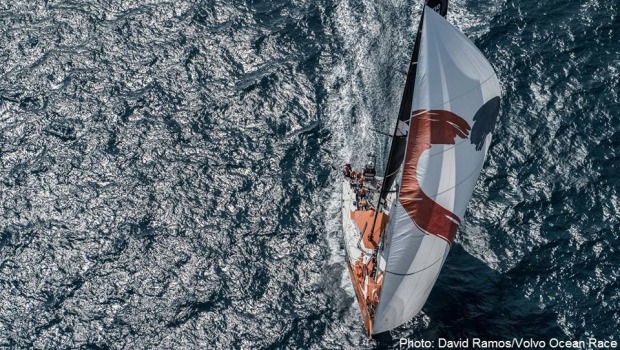Team Alvimedica: Balancing youth and experience
Published on October 5th, 2014
With a fellow alumnus from Brown University’s sailing team, American Charlie Enright had persuaded a Turkish medical-products company to put up nearly $20 million to sponsor their participation in the Volvo Ocean Race, the 38,739-mile global circumnavigation that is often called sailing’s Everest. Named for its sponsor, Team Alvimedica is an American/Turkish flagged entry in the 9-month contest.
But what really sets Alvimedica apart is its youth. Even with a 49-year-old navigator, the crew’s average age is just 32. And in this business, youth is a decidedly mixed blessing.
Physical stamina is clearly required for months of high-intensity, round-the-clock sailing in conditions that are often treacherous. Changing and altering the position of the sails can only be accomplished with human power, and there is rarely enough sleep. But winning the Volvo usually comes down to something else: experience.
Enright understood his team’s lack of experience would be hard to overcome. As such, he had persuaded an accomplished navigator, Will Oxley, to join the crew.
An Australian—one of five non-Americans on the eight-man crew—he had been initially reluctant. But after joining the team for a trans-Atlantic crossing, from Lisbon to Newport, R.I., he signed up. “Charlie impressed me as a real leader of men,” Oxley said, adding that Enright’s youth had an unexpected benefit: “He brings a fresh approach to the table, which forces me to think about everything in new ways.”
The Round Britain and Ireland Race in August, an 1,800-mile sprint around Britain and Ireland, had attracted five of the seven Volvo Ocean Race teams, offering the young Americans their first opportunity to see how they stack up.
When the team reached northernmost point of Britain and turned to the south, their forward sail exploded. Was Alvimedica’s inexperience to blame? “We don’t think so, although we were pushing pretty hard and we had a lot of canvas up,” said Mark Towill, Enright’s 25-year-old fellow Brown alum. “But maybe we should have throttled back.” That possibility meant the incident carried an important lesson: “The Volvo is 40,000 miles,” said Towill, “and you can’t do it without sails.”
Months earlier, Ken Read, a very accomplished sailor who, as it happens, is president of North Sails, which manufactured the sail, had urged the team to do more sailing. “Experience is magic, and experience also means safety,” he said. Enright had agreed to let members of the crew spend some of the summer sailing on other boats, a decision he now regretted.
Ocean racing is relentlessly dangerous. In the 2006 Volvo, Hans Horrevoets, a 32-year-old Dutchman who was part of another young crew—Horrevoets was its oldest member—was washed overboard and died during the New York-to-England leg of the race. Enright acknowledges that young men, himself included, generally are inclined to accept greater risks than their elders—but he tends to see that as mostly a positive.
Enright is now focused on keeping things positive and managing expectations. He hopes to be among the “top-tier finishers”—he declines to be more specific—but he acknowledges that can only happen if his team’s performance improves substantially. “For us, the first half of the Volvo will be all about learning and picking up experience,” he said. “Our performance will be important but how we react to our performance is going to be even more important.”
After enjoying a confidence boost by winning the first In-Port Race in Alicante, Spain on October 4, the team will now be gearing up for the start of the first distance leg, 6487 nm from Alicante to Cape Town, on October 11.
Source: Excerpts from story by G. Bruce Knecht in the Wall Street Journal.









 We’ll keep your information safe.
We’ll keep your information safe.